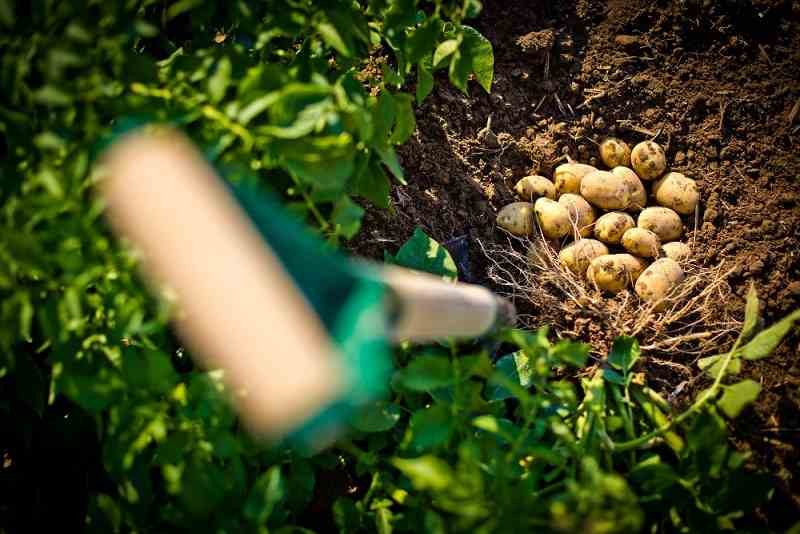Introduction to Potato Companion Plants:
Companion planting is a gardening technique that involves growing certain plants together to promote mutual benefits like pest control, improved growth, and better yields. Potatoes, a staple in many gardens, benefit significantly from companion planting when paired with the right plants. In this guide, we’ll explore the best companion plants for potatoes as well as those you should avoid.
Benefits of Companion Planting with Potatoes
Companion planting offers a variety of advantages for potatoes, including:
- Pest Control: Certain plants repel common potato pests like aphids, Colorado potato beetles, and nematodes.
- Improved Soil Health: Some companion plants fix nitrogen in the soil or act as living mulch to retain moisture.
- Maximized Space: Companion planting allows for efficient use of garden space by pairing crops that grow well together.
- Enhanced Flavor and Growth: Strategic plant pairings can improve the taste and quality of your potato harvest.
Best Potato Companion Plants
Here’s a list of plants that work exceptionally well with potatoes:
- Legumes (Beans and Peas):
- Legumes fix nitrogen into the soil, enriching it for potatoes, which are heavy feeders.
- These plants also help improve soil structure over time.
- Alliums (Onions, Garlic, Leeks, and Chives):
- Alliums repel pests like aphids, slugs, and potato beetles.
- Their strong scent can deter rodents and other animals from digging up potatoes.
- Marigolds:
- Marigolds are a natural pest deterrent, particularly against nematodes in the soil.
- They add a pop of color to your garden while protecting potato plants.
- Horseradish:
- When planted near potatoes, horseradish acts as a natural defense against pests like potato beetles.
- Its deep roots also help aerate the soil.
- Herbs (Basil, Parsley, and Thyme):
- These herbs attract pollinators and beneficial insects while repelling harmful ones.
- Thyme and parsley are particularly effective at deterring cabbage moths and aphids.
- Cabbage Family (Broccoli, Kale, and Cabbage):
- These plants thrive near potatoes and don’t compete heavily for the same nutrients.
- Their leafy canopies can provide shade, helping to retain soil moisture.
- Spinach and Lettuce:
- These greens grow quickly and can be harvested before potatoes need additional space.
- They act as living mulch, keeping the soil cool and moist.
- Nasturtiums:
- Nasturtiums are excellent at attracting aphids, drawing them away from potatoes.
- They also repel whiteflies and beetles.
Plants to Avoid Planting Near Potatoes
While some plants are beneficial, others can hinder potato growth or attract harmful pests. Avoid planting these near potatoes:
- Tomatoes:
- Both tomatoes and potatoes are in the nightshade family and are susceptible to similar diseases like blight. Planting them together increases disease risk.
- Eggplants and Peppers:
- These nightshade relatives attract the same pests as potatoes, such as Colorado potato beetles.
- Carrots:
- Potatoes and carrots compete for nutrients and space, leading to poor growth for both crops.
- Cucumbers:
- Cucumbers can make potatoes more susceptible to fungal infections.
- Sunflowers:
- Sunflowers release allelopathic chemicals that can inhibit potato growth.
Tips for Successful Potato Companion Planting
To get the most out of companion planting, follow these tips:
- Spacing: Ensure that companion plants aren’t overcrowded, as potatoes need room for their tubers to grow.
- Rotation: Rotate potato crops to different garden spots each year to prevent soil-borne diseases.
- Monitor Pests: Even with companion planting, keep an eye out for pests like potato beetles and remove them manually if needed.
Conclusion
Companion planting is a powerful, natural way to boost potato growth, protect against pests, and improve garden biodiversity. By pairing potatoes with helpful plants like legumes, marigolds, and alliums, you can create a thriving and harmonious garden ecosystem. Remember to avoid planting incompatible species to ensure your potatoes remain healthy and productive.
With these tips, you’ll be well on your way to a bountiful potato harvest. Happy gardening!
For more, visit our website, Homethreads







